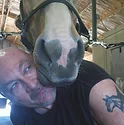Advertise Follow Us
Anatomy
Stay up to date on the latest instruction and information about the anatomy of equine distal limb.
ARTICLES
Each week our editors will bring you data we collected in our 2025 American Farriers Journal Business Practices Survey. Continue reading below for our latest update and check back weekly for the next set of information.
Read More
Lameness
Distinguishing Equine Cervical Spine Problems & Poor Gait Quality
The association between dysfunctions and disorders of the neck, back and pelvis with the farrier’s work
Read More
Top Takeaways from the 2025 International Hoof-Care Summit
Attendees share their most valuable experiences
Read More
How Crooked Carriage Affects Equine Hoof Form
A horse’s leaning preference & joint articulation are strong influences
Read More
When Should the Equine Hoof & Pastern Angle Line Up?
Simulated mid-stance position allows evaluation of the mechanics of the hoof, pastern angle & fetlock
Read More
50 Years of American Farriers Journal




















